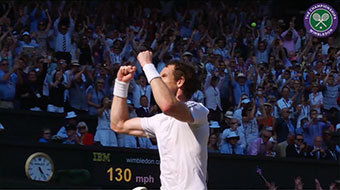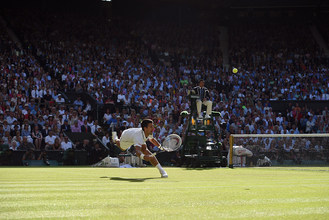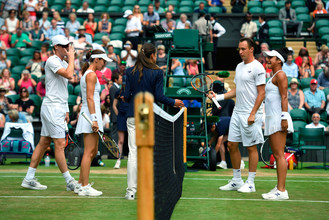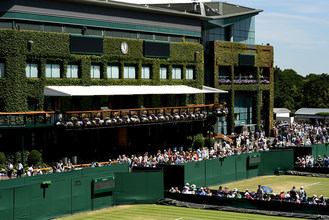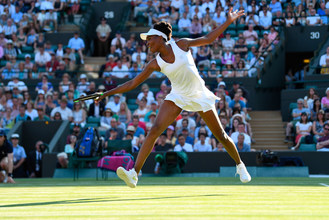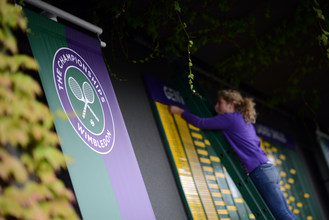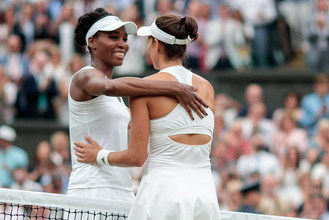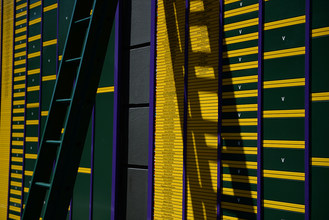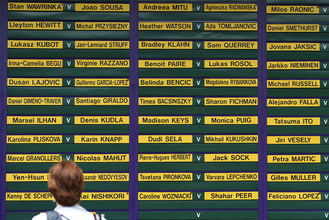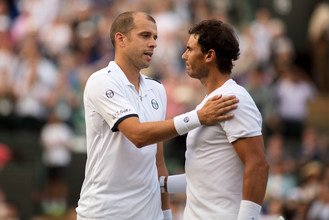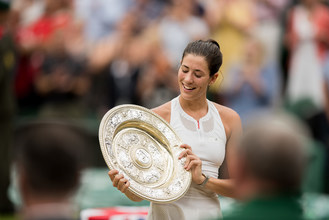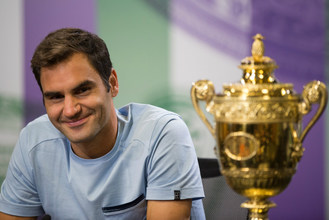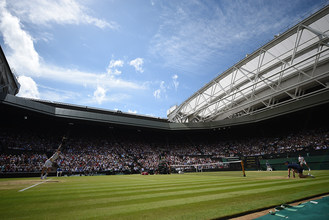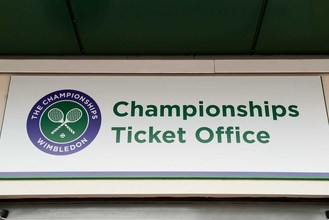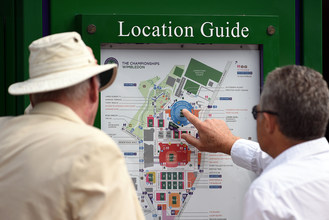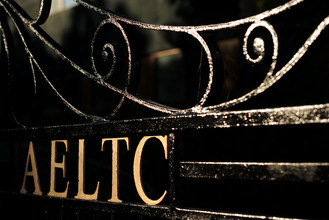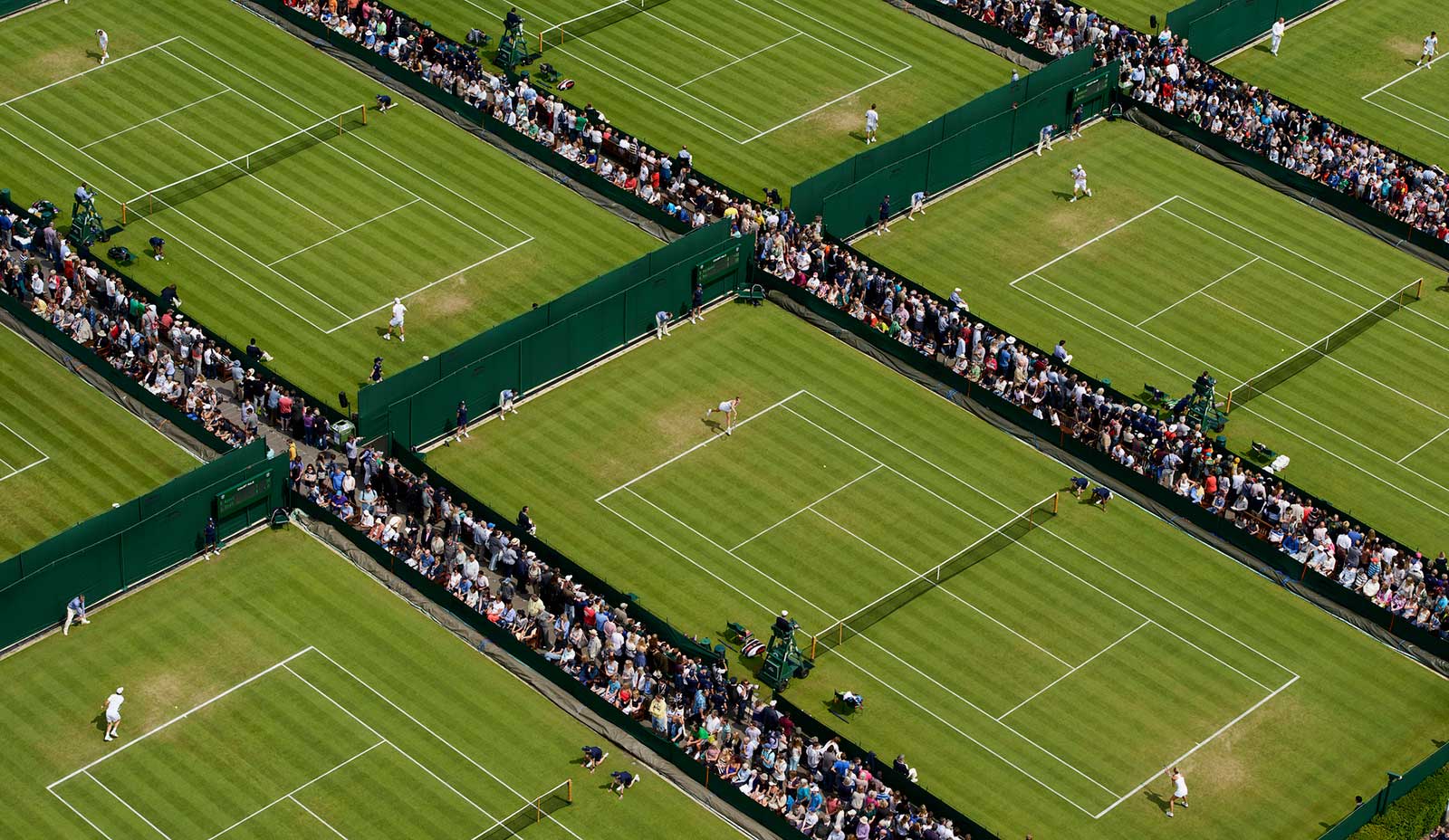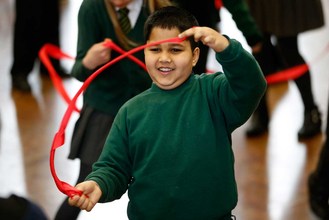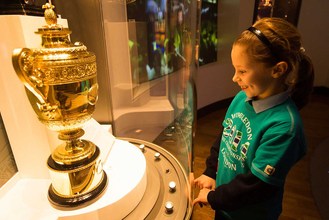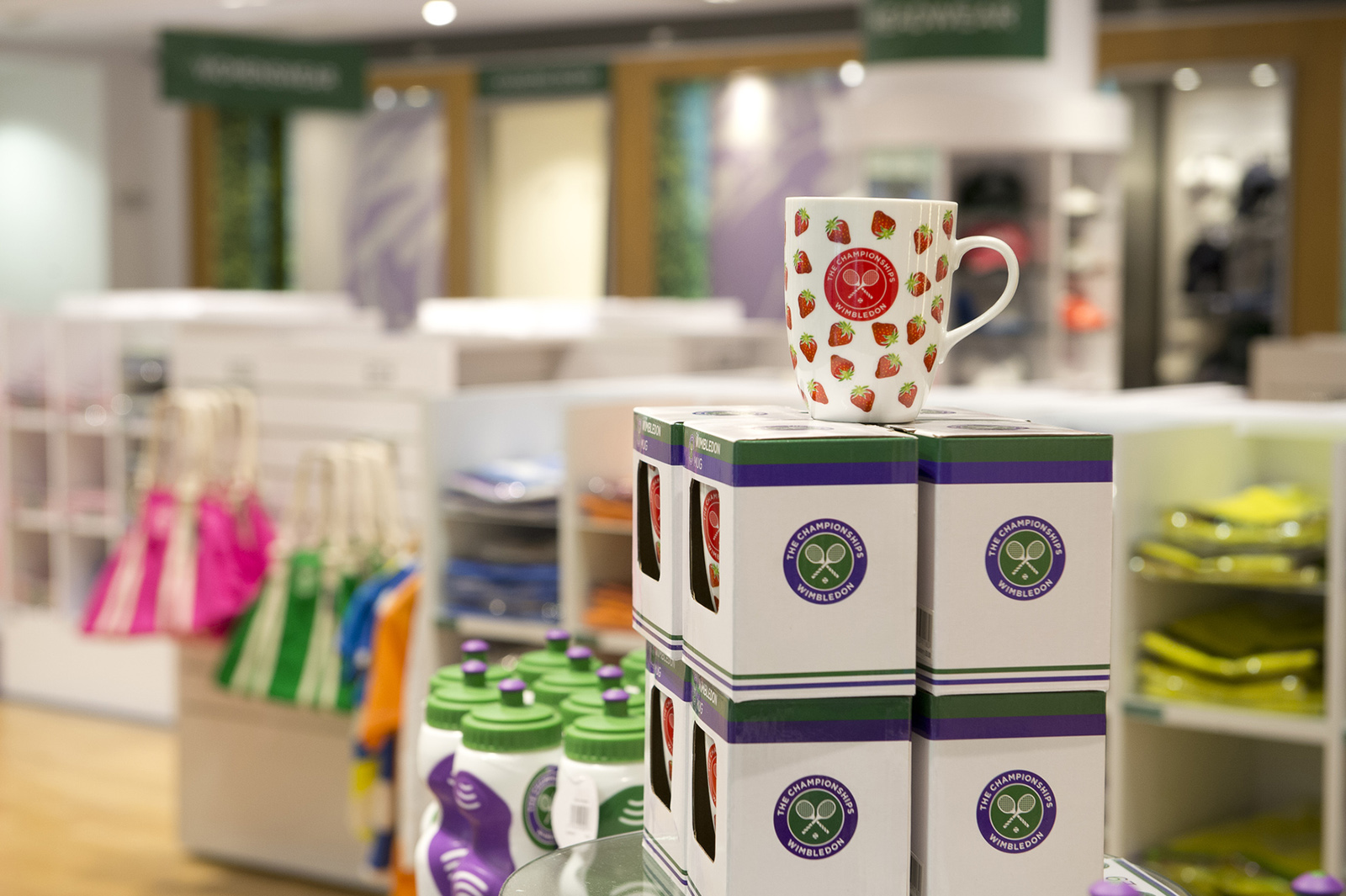1931: Sidney Wood
The 1931 Men’s Championship final has a sad place in Wimbledon’s distinguished history in being the only one never to have taken place. In what was to have been an all-American affair between Davis Cup team-mates and good friends Sidney Wood and Frank Shields, the 19-year-old Wood was handed the trophy without having to swing a racket when Shields was forced to withdraw from what should have been his great day after damaging a knee in his semi-final victory over Jean Borotra.
Wood had made his Wimbledon debut as a 15-year-old in 1927, gathering a mere five games in losing his first-round match against Rene Lacoste and 1931 was his first Wimbledon since that miserable occasion.
Seeded seventh, he dropped only two sets in reaching the semi-finals, where he saw off the challenge of a bright English 22-year-old called Fred Perry in four sets. It was to be, in effect, the match which won him the title.
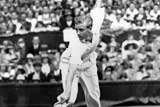
1933: Jack Crawford v Ellsworth Vines
Having won the 1932 Wimbledon men’s crown on debut at 21, the tall Californian Ellsworth Vines was a hot favourite to repeat that success at the 1933 Championships.
With his centre-parted hair, long-sleeved shirts buttoned at the wrists and old-fashioned square-headed racket, his opponent in the final, Jack Crawford, was a throwback to the more leisurely, elegant days of tennis, but there was nothing old-fashioned about his game, or his tactics.
Battered by the Vines serve, which produced 11 winning games to love, Crawford clung on grimly. The Australian edged through in the second 11-9 and won the third easily, only to drop the fourth. In the fifth set, Crawford abandoned his defensive tactics, began rushing the net and won the title 4-6, 11-9, 6-2, 2-6, 6-4 by breaking the Vines serve to love. It has deservedly taken its place as one of the finest ever Wimbledon finals, and proved a popular victory for the first Australian champion since Gerald Patterson 11 years earlier.

1935: Helen Wills Moody v Jacobs
The dazzling 1920s achievements of Suzanne Lenglen at Wimbledon were soon matched, and then exceeded, by Helen Wills Moody, a Californian the media nicknamed “Miss Poker Face”, whose eight Wimbledon singles titles remained a women’s record until Martina Navratilova hove into sight in the 1990s.
It was the misfortune of another Californian, Helen Jacobs, to have a career which ran parallel to the world’s greatest. Jacobs was the victim in four of Wills Moody’s last five Wimbledon finals, but none could have been more disappointing than the 1935 final. Wills Moody was short of practice and seeded only fourth when she arrived in search of her seventh Wimbledon.
Having dropped the second set Wills Moody was rattled and went match point down at 2-5 in the deciding set, saving it when Jacobs netted a wind-affected smash. Inevitably from there, Wills Moody surged home 6-3, 3-6, 7-5. The following year provided consolation of sorts for Jacobs. With Wills Moody absent, she won her only Wimbledon.
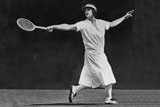
1936: Fred Perry’s third title
Fred Perry’s achievement in winning Wimbledon in three successive years still shines beacon-bright. When he pulled off the first hat-trick of titles it marked a quarter of a century since Britain’s previous men’s winner, Arthur Gore in 1909 (the year Fred was born), and since then 75 years have passed without a British men’s champion.
The fact all three of Perry’s victories were achieved in straight sets was testimony to a fitness regime, which included training with the Arsenal football team, and the first was possibly the most impressive when in the 1934 final he overcame the defending champion Jack Crawford 6-3, 6-0, 7-5.
Gottfried von Cramm, the first German to reach a Wimbledon men’s final, was Perry’s 6-2, 6-4, 6-4 victim in the 1935 final, but there was concern when von Cramm defeated Perry in the 1936 French Open final. Aided by the knowledge that the German was carrying a leg injury, though, Perry swept home 6-1, 6-1, 6-0. And after winning the US title two months later, Perry was lost to the professional game.

1937: The first television coverage
It had been less than a year since the famous Movietone News commentator Leslie Mitchell presented the first ever BBC television programme to the British public with the words: “It is with great pleasure that I introduce you to the magic of television.” Those words were spoken on 26 August 1936.
By the following spring the BBC broadcast their epoch-making first live sports coverage, with The Championships being honoured to introduce sport to a television audience, albeit of only a few thousand within a 40-mile radius of the BBC’s transmitters in north London.
With two cameras on Centre Court, the daily transmission time limited to 30 minutes, and the Corporation’s top announcer Freddie Grisewood doing the commentating, the first round match on 21 June 1937 between the fourth seed Bunny Austin and George Rogers of Ireland was screened. The next day The Daily Telegraph reported, “You could observe every movement of the players and even the passage of the marks of the lawnmower over the grass were distinctly visible”.

1937: Dorothy Round
Britain’s tennis reputation - and morale - which was given such a boost by Fred Perry’s successes was further lifted in the years preceding World War II by the achievements on the women’s side of Dorothy Round.
Round, whose religious principles caused a stir in Paris when she refused to play on a Sunday at the French Open, had teamed up with Perry for a British double in 1934 by overcoming the top-seeded Helen Jacobs in a three-set final, and three years later she became champion for the second time.
It was an altogether more arduous task in 1937. As seventh seed, Round had to repel Helen Jacobs in the quarter-finals and then France’s leading player, Simone Mathieu, in the semis before bravely coming through against the strong Polish fourth seed, Jadwiga Jerdrzejowska, 7-5 in the deciding set.
Round’s Wimbledon triumphs, which included back-to-back mixed doubles titles with Fred Perry in 1935-36, were achieved in the era of Helen Wills Moody’s greatness, and were the last by a British woman until Angela Mortimer in 1961.

1937: Singles, Doubles and Mixed
After the exhilarating hat-trick of Wimbledon wins by Fred Perry, it was the turn of the United States, spearheaded by the great Don Budge, to take over domination of the men’s singles championship - and the tall, red-headed American did it in some style by also winning the men’s doubles and mixed doubles crowns - and then repeating that astonishing achievement the following year, when he also became the first to win the Grand Slam of all four major singles titles.
As top seed, Budge dropped only one set in the 1937 singles (to fellow American Frank Parker in the semi-finals), and he crushed Gottfried von Cramm for the loss of just nine games in the final. Budge’s success in the 1937 men’s doubles, with Gene Mako, was notable as the American pair were winners in four sets against the British Davis Cup combination of Pat Hughes and Charles Tuckey. The mixed doubles, where he teamed up with Alice Marble, was an easier affair, a 6-4 6-1 stroll against the French couple, Yvon Petra and Simone Mathieu.
1937: Donald Budge v Gottfried Von Cramm
One of the finest men’s contests in the history of Centre Court took place not in The Championships but the Davis Cup, when Germany faced the United States in the 1937 Inter-Zone play-off for the right to challenge the defending champions, Great Britain, in the final.
The tie, agonisingly poised at 2-2 on the third and final day, hung on the last singles in which the newly crowned Wimbledon champion, Don Budge, faced Gottfried von Cramm, the man he had beaten to capture the title.
Before going on court Von Cramm took a phone call from Adolf Hitler urging him to win for the Fatherland. He won the first two marathon sets 8-6 and then 7-5. The next two sets went to the American but in the fifth von Cramm, playing the tennis of his life, opened up a 4-1 lead. Budge told his non-playing captain Walter Pate, “Don’t worry Cap, I’ll win this if it kills me”. And he did, breaking serve at 6-6 to win 8-6 against an opponent who saved five match points in an unforgettable contest, which ended in semi-darkness.

1938: Bunny Austin
Bunny Austin started to come to prominence in the ‘20s while an undergraduate at Cambridge but it was in the next decade that he made even more of an impact with two appearances in the men's singles final at Wimbledon in 1932 and 1938. Not since 1938, when he was beaten by the Grand Slam winner Don Budge, has a British player reached the final.
Austin was overshadowed by Fred Perry who won the Wimbledon title three times but he was a considerable force in the Davis Cup team, which won the trophy four times in the ‘30s. He was far from a disappointment at Wimbledon as he first secured a place in the singles final in 1932 when he was beaten by Ellsworth Vines of California who was recorded as having won the last point with a service which nobody saw, apart from a cloud of dust.
Austin did leave his mark on Wimbledon — in 1934 he was the first player to wear shorts there — and he was a quarter-finalist or better 10 times.
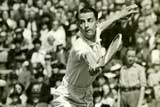
1938: Donald Budge
Don Budge of the USA started to make an impact when he first played at Wimbledon in 1935 and three years later became the first Grand Slam winner, including taking the Wimbledon title without losing a set. Three times Budge was taken as close as 7-5 but in no round did he concede more than eight games.
His final against Bunny Austin of Great Britain was his best performance that year, winning by 6-1, 6-0, 6-3. Budge won the doubles and mixed doubles as well, just as he had in 1937, and was the undoubted No.1 player in the world, a position he maintained for five years. Budge was a genuine giant of a player and his rolled backhand was widely praised as his most defining stroke.
It was a weapon that gave his game a significant foundation. During World War II he tore a shoulder muscle that affected him later in his career, which was largely spent in the professional ranks dealing with players such as Bobby Riggs, who was the last pre-war champion at Wimbledon, and Frank Sedgman.

1938: Helen Wills Moody’s Eighth
Helen Wills was beaten in the first Wimbledon final she played - against the British player Kitty Godfree in 1924--but the rest of her appearances at Wimbledon simply allowed her to demonstrate her astonishing skills on grass and the command she built and sustained over the championships. As an example, she lost a set in the first round of the 1927 championships but did not lose another until six years later, not just at Wimbledon but in any other tournament as well.
Her nickname "Little Miss Poker Face," because of her intense concentration, was well earned. In 1938 she came to play at Wimbledon for the last time, winning once more at the age of 32. It was at Wimbledon where she made the greatest impact and one of her contemporaries, Don Budge, said many years later that in his view no woman hit the ball harder until Steffi Graf came along. Wills Moody always practised with men players. It was Martina Navratilova who finally overhauled Wills Moody in 1990 when she won her ninth Wimbledon title.

